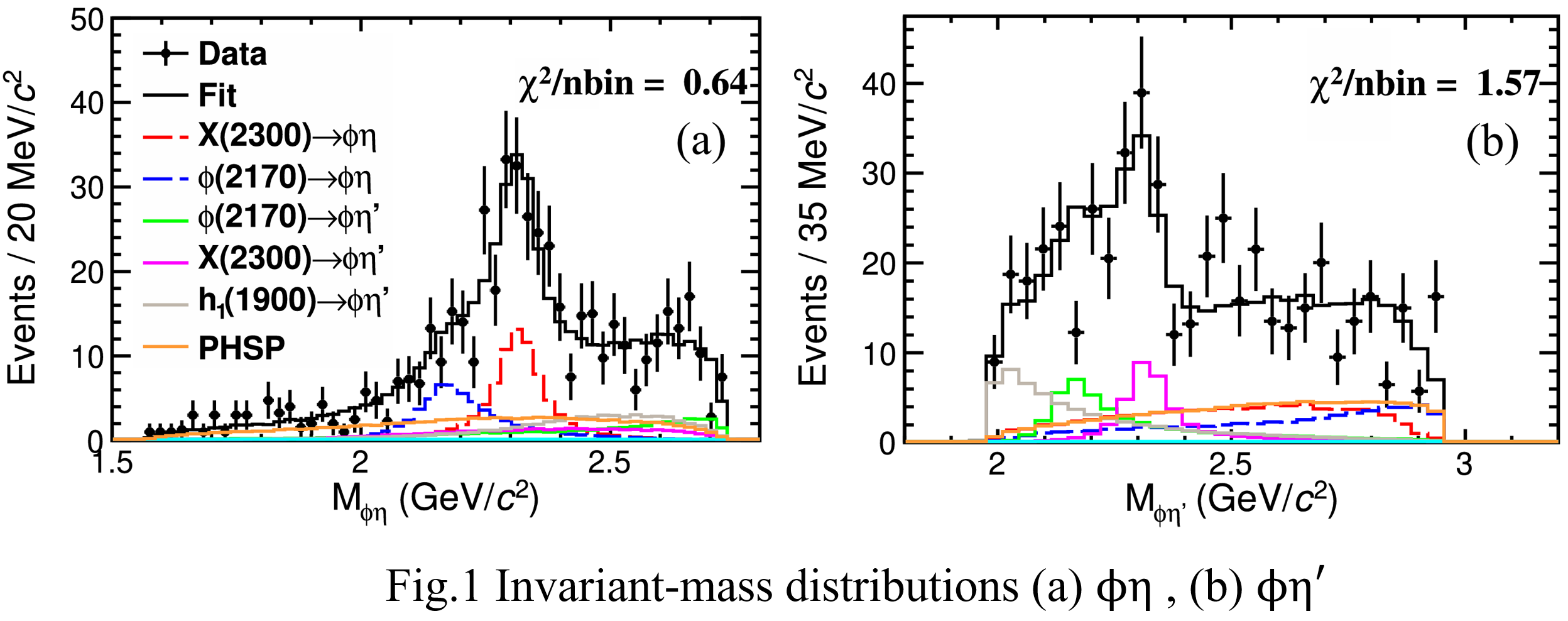

The BESIII Collaboration recently reported “Observation of an axial-vector state in the study of the decay ψ(3686)→ϕηη' ”. The paper has been published online in Physical Review Letter. [Phys. Rev. Lett. 134, 191901 (2025)].
A strangeonium state, being the bound state of a light s and anti-s quark, is related to color confinement in strong interactions, which provides insights into non-perturbative QCD in the low energy region. The strange quark is a bridge between the light quarks (such as u and d quarks) and the heavy quarks (c and b quarks), while strangeonium provides an essential experimental platform for exploring the properties of non-perturbative QCD. However, compared with the substantial progress in the study of other quarkonium systems, research on strangeonium remains notably limited: on the one hand, experimental evidence for excited states of conventional strangeonium is limited; on the other hand, experimental data on exotic hadronic states containing strangeonium—such as hybrid states and multiquark states—remain scarce. A systematic exploration of strangeonium is not only crucial for completing the hadron spectroscopy but also plays an important role in testing and advancing QCD in the low-energy regime.
Using 2.7 billion ψ(3686) events collected at electron-positron collider, the BESIII collaboration performed a partial wave amplitude analysis of the decay ψ(3686) → ϕηη′. An axial-vector state around 2.3 GeV/c², named X(2300), was observed in the invariant mass spectra of ϕη and ϕη′ for the first time, as shown in Figure 1. The mass and width of X(2300) are:
MX(2300) =2316±9stat.±30sys. MeV/c2,
and
ΓX(2300) = 89±15stat.±26sys MeV.

It is worth noting that in an earlier study, the BESIII Collaboration, using 10 billion J/ψ events, performed a partial wave amplitude analysis of the decay J/ψ → ϕηπ⁰ and observed a structure in the ϕη invariant mass spectrum for the first time, identified as h₁(1900). This state is considered a candidate for the axial-vector strangeonium state h₁(2P). Together with the previously confirmed h₁(1415) and the newly discovered X(2300), BESIII has made systematic progress in the study of axial-vector strangeonium states.
Reference: Phys. Rev. Lett. 134, 191901 (2025)
URL:https://link.aps.org/doi/10.1103/PhysRevLett.134.191901
DOI: 10.1103/PhysRevLett.134.191901
h1(1900) URL: https://link.aps.org/doi/10.1103/PhysRevD.110.112014
h1(1900) DOI: 10.1103/PhysRevD.110.112014